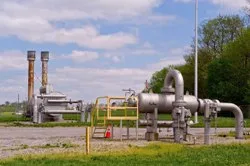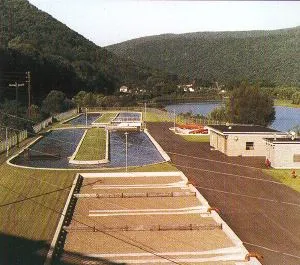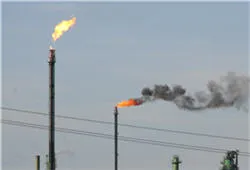As the PA PUC embarks on its investigation of the natural gas markets, what evidence can we discern about how the agency sees competitive energy markets and how those markets should evolve?
On August 21, 2014, the PUC issued a Tentative Order that identified a laundry list of issues that its Office of Competitive Market Oversight (“OCMO”) will be tasked with investigating. The list includes such items as the assignment of storage and pipeline capacity, tolerances/penalties for system balancing, customer education and switching timeframes, to name a few. However, the list is perhaps most notable for issues not included. There will be no discussion of the natural gas distribution companies (“NGDC”) exiting the merchant function and no discussion of standard offer referral programs.
Looking first at the issues that will be examined, many involve nuts and bolts operational issues. Capacity assignment, switching timeframes, access to on-system delivery points, and so on. Improvements in the efficiency and fairness of these aspects of the interaction between natural gas suppliers (“NGS”) and NGDCs will make the market more seamless, reduce costs for NGSs and potentially NGDCs, and will provide a better customer experience. All of these would be good outcomes, and I am not aware of any party that opposes taking a look to see what tweaks or even more substantial changes are needed. This operational focus– regulating the market and making sure the existing structure works as best it can – is something the PUC views as within its wheelhouse, an area of core competency.
Devoting time to competitive market operational details, however, diverts resources and attention from the larger issues that will decide whether Pennsylvania’s competitive market will endure and thrive. For now, at least, it appears the PUC wants nothing to do with any discussion of NGDCs exiting the merchant function. There could be several reasons for the Commission’s reticence, considering that only a few short years ago, the Commission appeared to be seriously considering programs in the electricity markets that could have transitioned many customers into the competitive market, and at least one electric distribution company was seriously considering a formal exit. One possible explanation is that the Commission has what golfers call a case of the “yips” — the inescapable feeling that you have lost your “game” which results, inexorably, in losing your game. The loss of confidence started with the abrupt manner in which the electric market RMI process was turned around at the last possible minute, dropping programs that would have transitioned many customers to competitive service. Last year’s “polar vortex,” which brought the PUC undeserved criticism for “allowing” a roiling of the retail electric markets, when the problem was a wholesale market issue, slowed forward progress even more. The fallout from that period is still being felt. The Commission promulgated regulations to police disclosure of variable rates; while House Consumer Affairs Committee Chairman Godshall wanted legislation that would have imposed rate regulation on “deregulated” retail EGS rates. The resulting, and rather public, falling out between Chairman Godshall and Commission Chairman Powelson seems to have made the PUC even more reluctant to take bold action. It seems clear that there simply is not the political will, and possibly not the political capital, to advance the deregulation agenda that the Commission clearly signaled in the past, especially in light of the impending gubernatorial election.
But neither the polar vortex aftermath nor politics explains why the PUC has shied away from at least examining whether standard offer programs, so successful in electric deregulation, should be used in natural gas retail choice programs. Standard offers were responsible for migrating many customers off of default service and into one year fixed rate electric contracts. Perhaps the Commission is taking a practical approach, waiting to see what happens at the transition when the one year electricity contracts expire to make sure that it has a handle on the issues that can crop up. Perhaps the Commission wanted to wait and see whom the voters pick on the first Tuesday in November, to see how things change across the street—if at all. Regardless, it may be that the very fact that the Commission chose to wait and see rather than move ahead with a program, even if doing so appears, by most accounts, to be rational, is a signal of a change in attitude at the PUC. More practical, less policy – at least for now. The recent focus on the passage of House Bill 939, the re-authorization of Chapter 14, which also includes the authorization for the Commission to assess NGSs and EGSs, may be further evidence of this approach.
What does all this mean for the future of energy markets, natural gas and electricity, in Pennsylvania? In the short term it probably means that the Commission will appear to be unwilling to go down the road of opening the natural gas RMI proceeding to include issues related to merchant function exit, even if the enabling legislation expressly provides for such a result. It means the RMI will remain focused on operational issues. In the electricity markets, it appears unlikely that there will be any new proceedings to address the competitive market, at least until people stop holding their collective breath over concern about the potential repeat of last winter’s extreme run-up in wholesale prices. In other words, nuts and bolts are fine, but let’s not get into any policy fights just now.
In the long term, things may be more hopeful for those seeking change in the structure of the retail energy markets, if we can put the remnants of the recent past behind us and step out from under the microscope long enough. Both gubernatorial candidates appear to favor competitive markets, although it is not clear how far either would go toward endorsing significant market changes at this juncture. It does not appear that the positions of the individual Commissioners on competitive markets have changed, either. Rather, it appears that circumstances outside their control have forced them to take the practical road for now.
So what does the future hold? The answer is, it depends. As is so often the case, policy in this area is dictated by reactions to current events. It depends on how volatile the retail markets become, and to a lesser extent, the cause of that volatility; it depends on who wins the race for governor, and the makeup of the Commission; and it depends on the marketers deciding to remain in Pennsylvania and staying engaged in the process. This last factor may be the most important.




